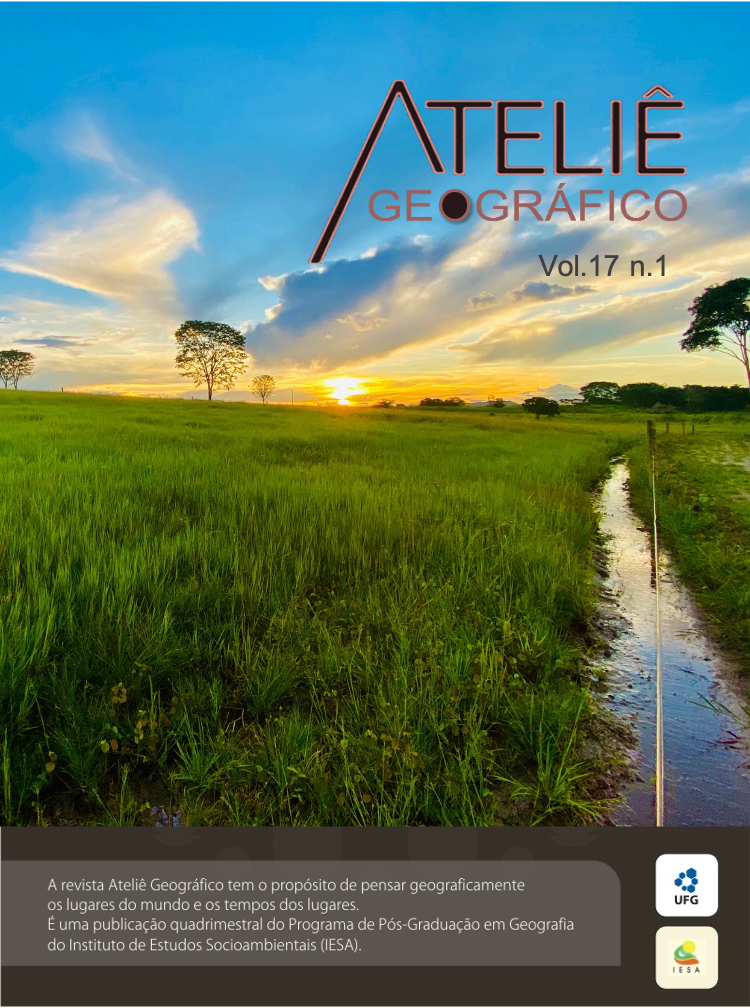The spatial dynamics of pluriactivity in family farming
DOI:
https://doi.org/10.5216/ag.v17i1.73072Abstract
The current organization of the brazilian rural space has transformed because of to the new technologies that have been inserted into the field. In this new scenery the field became a multi-functional space and began to meet different demands and occupations. The general objective of this study is to present a discussion based on the concepts and definitions of pluriactivity in family farming, emphasizing its importance when being carried out by people living in rural areas, since this activity is reorganized in the field and contributes to the income of many families. The specific objectives are: to address the concepts and definitions of pluriactivity in family agriculture in the socio-spatial dynamics of the field; and understand the importance of family farming for the pluriactivity. The theoretical reflections are anchored in the propositions of authors such as: Sérgio Schneider, K. Kautsky e A. Chayanov. Articulated with these orientations on pluriactive activities data on these activities in family farming production were organized to check if there is correspondence between the concept and reality. As we have tried to make evident in the text, it is possible to state that, the pluriactivity is a phenomenon in which farming families traditionally occupied with agricultural activities will develop other activities considered non-agricultural as an income complementation strategy. In addition, many rural settlements can to presente various natural, cultural, and socioeconomic factors, that contribute to the realization of pluriactivity, as: the local tradition, customs and way of life of the rural man, the production categories, agricultural activities and the those not developed in rural areas.
Keywords: Rural Space. Pluriactivity. Family Farms.
Downloads
Downloads
Published
How to Cite
Issue
Section
License
Autores que publicam nesta revista concordam com os seguintes termos:- Autores mantém os direitos autorais e concedem à revista o direito de primeira publicação, com o trabalho simultaneamente licenciado sob a Licença Creative Commons Attribution que permite o compartilhamento do trabalho com reconhecimento da autoria e publicação inicial nesta revista.
- Os autores não serão remunerados pela publicação de trabalhos na Revista Ateliê Geográfico. Além disso, os conteúdos publicados são de inteira e exclusiva responsabilidade de seus autores, ainda que reservado aos editores o direito de proceder a ajustes textuais e de adequação às normas da publicação.
- Autores têm permissão e são estimulados a divulgar seu trabalho online (ex.: em repositórios institucionais ou na sua página pessoal), já que isso pode gerar alterações produtivas, bem como aumentar o impacto e a citação do trabalho publicado (Veja O Efeito do Acesso Livre).


